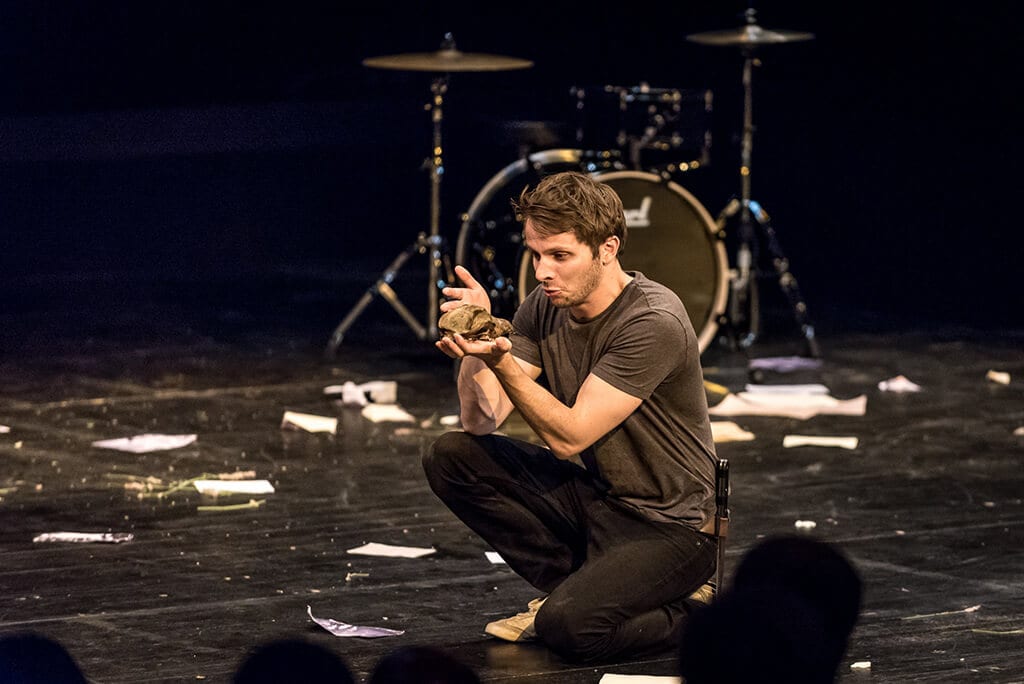Hamlet is usually considered to be Shakespeare’s longest play, with the full text taking about five hours to perform. It’s not unusual, then, for directors to cut the play drastically to make it fit into a modern performance slot of two to three hours. The Flute Theatre, however, has gone beyond the usual, and created a version of Hamlet which lasts only an hour and a half. Many side characters are removed, as are most non-essential scenes, and the set is stripped-back; there are also few props, as the excess is scraped away from both the stage and the script to focus on the central concerns of Hamlet.
In Hamlet: Who’s There? the premise of Hamlet is adapted slightly – all the events of the play take place in one evening, as we hurtle through the script and characters drop like flies. However, the play never feels rushed – we are carried along on the wave of Hamlet’s emotion, moving seamlessly from scene to scene. The cut scenes are barely missed, while the characters of Rosencrantz, Guildenstern and Horatio are all blended with Laertes, who takes on the role of Hamlet’s friend and confidant – making the final scenes even more powerful, as we watch Hamlet and Laertes fight in the graveyard, knowing that only hours before they were best friends.
Often, to keep the pace up, different scenes are combined: the final scene, for example, is incorporated into the funeral scene, a decision which works incredibly well. Although this performance uses a stripped-down text, it still manages to include all the important scenes and speeches, and there are moments of stillness and contemplation in the midst of the chaos. The text is slightly amended to accommodate the changes to the production (for example, Claudius and Gertrude’s entreaties to Rosencrantz and Guildenstern are adapted for Laertes instead), but the changes are so subtle they are barely noticeable. The only moment when the cast abandons Shakespearean dialogue is in the ‘who killed the king’ scene, which is adapted from a play into a party game led by Hamlet – this scene provides some light relief from the intense emotions of the rest of the play, before plunging headfirst back into them.
Definitely the most interesting directorial decision made in this production is the portrayal of the ghost, who is represented neither by an actor, nor a disembodied voice; instead, Hamlet is possessed by his father’s spirit, a choice which doesn’t quite fit with the text of the play, but which nevertheless pays off, and offers an interesting take on the already highly-debated relationship between Hamlet senior and junior. Quartley’s acting is phenomenal throughout, as he uses physicality as well as stillness to explore the character of Hamlet. Hicks is excellent as Claudius, sinister but still at heart a human, relatable character, while Cormack offers us a nuanced and emotive Laertes. Shrinking five hours into one and a half is an incredible gamble, but The Flute Theatre loses nothing by it – instead, it has created one of the most interesting and powerful interpretations of Hamlet yet.

